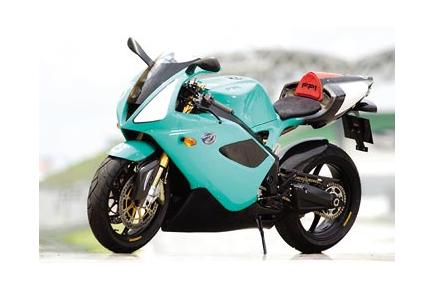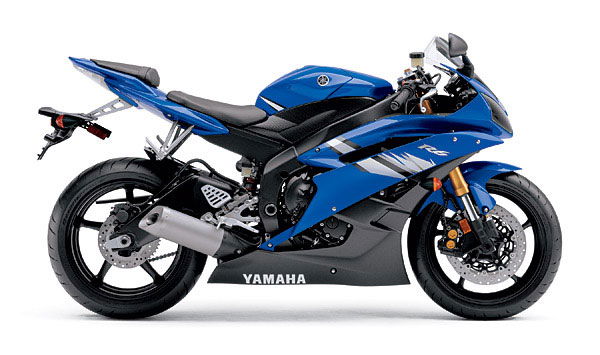Daytona 675 (2006 - 2012) review
Triumph has ticked nearly every box with the new Daytona. It is different from other 600's and a joy to ride.

I enjoyed the 600 and 650 Daytonas, and I was also one of the few journos that thought the TT600 was a bit of fun. But all three models were a fair way off rocking the Japanese. Looking back, Triumph seemed to wander off into four-cylinder land but found it didn’t suit the firm’s character or heritage. I believe it’s right back on track and doing what it does best.
At a glance and without graphics, the red 675 could be a Ducati 916, but get up close and it’s more 21st century, much more compact and even better looking. The black, beautifully crafted frame and
swingarm complement the quality finish. This theme continues under the bodywork, unlike some recent models that have had the odd oversize bolt protruding when you delve into hidden areas.
Since my first sighting of it at the NEC in November I’ve been looking forward to riding this bike. Being a small sports bike, I stupidly thought it would feel similar to other small sports bikes. But from the moment I hit the starter button and set off I realised I was in for a very different experience. The familiar throaty growl coming from the noisier (aftermarket) pipe immediately reminded me I was on board a Triumph. At first this seemed quite peculiar, but after a few track sessions everything began to make sense. The 675 may have the vital statistics of a skinny CBR600RR, but the track riding experience couldn’t be more different.
It has a similarly roomy riding position but, while the Honda is all about high revs and constant gear shifting, the Triumph functions best using the mid-range power.
The baby triple is very smooth at low rpm and gradually builds to pull strongly from 10,000rpm onwards to rev limiter, which kicks in just over 14,000rpm. Maximum power is a claimed 123bhp at 12,500rpm, and at a dry weight of 165kg this compares nicely with the four-cylinder competition.
Triumph claims to have put a lot of effort into giving the 675 class-leading brakes. This could well be true, since there appeared to be zero fade after continual hard braking and plenty of power left in reserve. The rear 220mm disc also worked well, yielding just the right amount of feel.
Triumph may want to believe this bike is not in direct competition with the current CBRs and R6s, but I’ll bet you’ll see a load at track days this summer. And why not? With nimble handling plus a very capable, distinctive engine, this tiny motorcycle can take on most of the competition. On top of that, the rear pegs, tail light and number plate can be whipped off in an instant.
Niall Mackenzie – Launch Report, March 2006 Issue
I enjoyed the 600 and 650 Daytonas, and I was also one of the few journos that thought the TT600 was a bit of fun. But all three models were a fair way off rocking the Japanese. Looking back, Triumph seemed to wander off into four-cylinder land but found it didn’t suit the firm’s character or heritage. I believe it’s right back on track and doing what it does best.
At a glance and without graphics, the red 675 could be a Ducati 916, but get up close and it’s more 21st century, much more compact and even better looking. The black, beautifully crafted frame and
swingarm complement the quality finish. This theme continues under the bodywork, unlike some recent models that have had the odd oversize bolt protruding when you delve into hidden areas.
Since my first sighting of it at the NEC in November I’ve been looking forward to riding this bike. Being a small sports bike, I stupidly thought it would feel similar to other small sports bikes. But from the moment I hit the starter button and set off I realised I was in for a very different experience. The familiar throaty growl coming from the noisier (aftermarket) pipe immediately reminded me I was on board a Triumph. At first this seemed quite peculiar, but after a few track sessions everything began to make sense. The 675 may have the vital statistics of a skinny CBR600RR, but the track riding experience couldn’t be more different.
It has a similarly roomy riding position but, while the Honda is all about high revs and constant gear shifting, the Triumph functions best using the mid-range power.
The baby triple is very smooth at low rpm and gradually builds to pull strongly from 10,000rpm onwards to rev limiter, which kicks in just over 14,000rpm. Maximum power is a claimed 123bhp at 12,500rpm, and at a dry weight of 165kg this compares nicely with the four-cylinder competition.
Triumph claims to have put a lot of effort into giving the 675 class-leading brakes. This could well be true, since there appeared to be zero fade after continual hard braking and plenty of power left in reserve. The rear 220mm disc also worked well, yielding just the right amount of feel.
Triumph may want to believe this bike is not in direct competition with the current CBRs and R6s, but I’ll bet you’ll see a load at track days this summer. And why not? With nimble handling plus a very capable, distinctive engine, this tiny motorcycle can take on most of the competition. On top of that, the rear pegs, tail light and number plate can be whipped off in an instant.
Niall Mackenzie – Launch Report, March 2006 Issue
| Seats | 2 |
| Cubic Capacity (cc) | 675 |
| Valves | 12 |
| Max Power (bhp) | 124 |
| Max Power Peak (rpm) | 12500 |
| Torque (ft/lb) | 53 |
| Torque Peak (rpm) | 11750 |
| Bore (mm) | 74 |
| Stroke (mm) | 52.3 |
| Compression Ratio | 12.65:1 |
| Valves Per Cylinder | 4 |
| Fuel Delivery | Fuel Injection |
| Stroke Type | Four Stroke |
| Drive | Chain |

